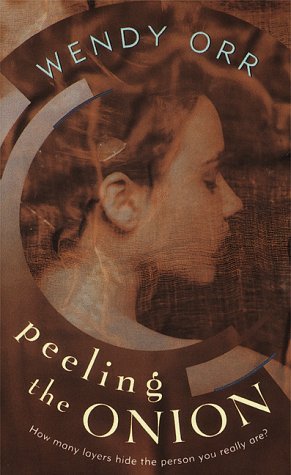In “‘Why Would I Want to Hear?’: Cochlear Implants in Young Adult Fiction,” Marion Rana commends the increasing number of protagonists in YA literature that represent minority groups from “the margins of society.”1 While Rana’s article focuses on the representation of deaf characters, she notes that the genre has made a general shift away from portraying characters with disabilities in “problem novels only.” While a greater range of representation is certainly reason to celebrate, many works still do utilize the old frameworks of problem novels, but in a subversively progressive way of their own.
In Neal Shusterman’s Challenger Deep, 14-year-old Caden shifts between two narratives—one fantastic and one realistic—that slowly begin to merge. For Caden, this event reveals the full extent of his mental illness. As the novel progresses, Caden learns not only which reality to trust, but how he can come to terms with the new future laid before him, one in which his sanity and his creativity frequently wage war.
While Challenger Deep does adhere in many ways to the frameworks of a problem novel, it also stresses that there is no clear “cure” for mental illness and part of Caden’s growth is learning this:
There are many things I don’t understand, but here’s one thing that I know: There is no such thing as a “correct” diagnosis. There are only symptoms and catchphrases for various collections of symptoms.
Schizophrenia, schizoaffective, bipolar I, bipolar II, major depression, psychotic depression, obsessive/compulsive, and on and on. The labels mean nothing, […] and no prognosis can truly be predicted.2
Many of Caden’s worries are initially wrapped up in the question of what his particular illness is—a question that is never fully answered. Words and labels continually haunt Caden’s thoughts, and this becomes especially true after he is checked into a hospital by his parents and roomed with a fellow patient, Hal, whose constant attempts to find connections between words begins to rub off on him. While Caden comes to trust the doctors who prescribe his medications, he also learns that their changing views of his own illness are indicative of a larger concept—their diagnoses are not final; they’re subject to change in the same way his symptoms are. Through this knowledge, Caden no longer feels trapped by what label he might be given.
The connection between labels and identity is also a concern for the main character, Anna, in Peeling the Onion. After a car accident leaves Anna with a number of complications, both physical and mental, she struggles to come to terms with the new challenges in her life. One of these challenges is wrapped up in the linguistic terms that she and others have pressed upon her:
Impaired’s an ugly word. Worse than handicapped. Disabled. Invalid. Am I disabled? How could I be? […] When do you stop being normal and turn into a handicapped person? […] ‘Invalid’ is a funny word. You say it one way it means a sick person. ‘Enfeebled,’ says the dictionary, ‘or disabled by illness or injury.’ Say it another way and it means not true. Not valid. Worthless.3
Anna’s words echo Caden’s in that they challenge the limits others have linguistically constructed for them. In Anna’s “Am I disabled?”, she seems to be raising the question not only to herself, but to society at large.
 Thus, while both of these novels focus on the introduction of a new illness and/or disability, they do so in a way that complicates the very idea of what the “problem” is, and—in so doing—raises the question “Who has the problem after all?”
Thus, while both of these novels focus on the introduction of a new illness and/or disability, they do so in a way that complicates the very idea of what the “problem” is, and—in so doing—raises the question “Who has the problem after all?”
Christine A. Jenkins notes that YA novels “have always centered on various life problems as experienced by young adults,” but what many have found problematic (as Rana alluded to) is the representation of illness or disability as the problem.4 In Disabling Characters, Patricia Dunn similarly observes the unfortunate tendency for society to expect individuals with disabilities to “try harder”—faulting the attitudes of the individuals rather than the society that marginalizes them.5 Challenger Deep and Peeling the Onion are two examples of novels that drastically move away from blaming the individual.
Rana regards this move as a step away from the problem novel’s tendency to look for a “cure.” The books above follow a similar movement in this sense; both portray characters who learn to accept themselves as they are, rejecting society’s expectations for them. Anna and Caden come to the same conclusion—that “getting better” doesn’t mean the same thing to them as it used to.
- Rana, Marion. “‘Why Would I Want to Hear?’ Cochlear Implants in Young Adult Fiction.” Journal of Literary & Cultural Disability Studies, no. 1, 2017, p. 69. ↩
- Shusterman, Neal. Challenger Deep. HarperTeen, 2015, p. 298. ↩
- Orr, Wendy. Peeling the Onion. Holiday House, 1996, p. 114. ↩
- Jenkins, Christine A. “Young Adult Novels with Gay/Lesbian Characters and Themes, 1969-92: A Historical Reading of Content, Gender, and Narrative Distance.” Over the Rainbow: Queer Children’s and Young Adult Literature, University of Michigan, 2011, pp. 147–163. ↩
- Dunn, Patricia A. Disabling Characters: Representations of Disability in Young Adult Literature. Peter Lang, 2015. ↩
